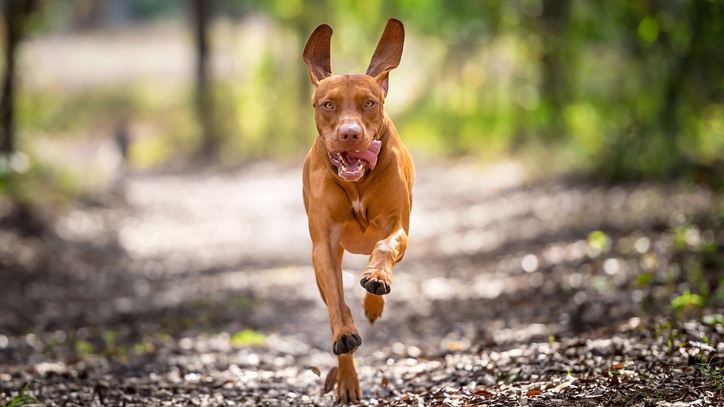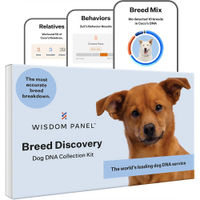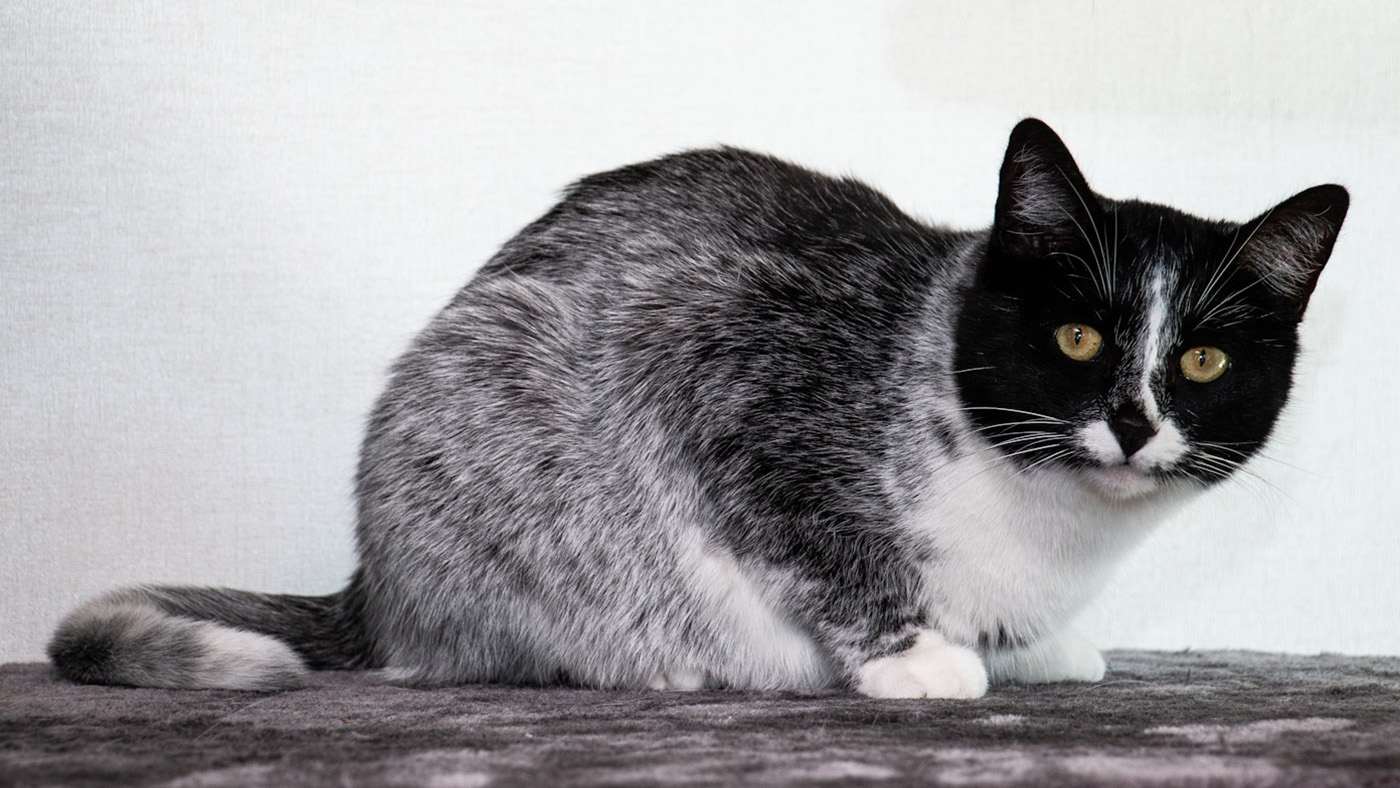Vizsla dog breed profile: Training, diet, grooming and health information
Vizslas are energetic sporting dogs who adore having their human family around

Hailing from Hungary, Vizslas are sporting dogs with bags of energy and enthusiasm. Able to work as both a pointer or retriever, they nearly became extinct following World War I. But, despite falling to as few as 12 in number, the breed was preserved, becoming popular again in the 1950s. They are now widely used as search and rescue dogs as well as sniffers and guides.
Although they are natural hunters of fowl and upland game, Hungarian Vizslas make for great companions. They have a protective nature and affectionate temperament. They also stick to their owners like glue.
Indeed, this medium-sized breed almost becomes a shadow, following their owners everywhere they go. But while this is totally endearing, it has its downsides too. Vizslas suffer from separation anxiety so owners must want to form an inseparable bond with this most adorable of breeds.
In this guide, we explore these issues and more, looking at the pros and cons of bringing a Vizsla into your home (assuming that you have one that's big enough). By the end, you should have enough knowledge to start making a decision but it's always worth talking to a vet and a breeder to be absolutely sure the breed will be a good fit for you.
How much exercise does a Vizsla need?
Life expectancy: 10-14 years
Average weight: Male: 60lbs / 27kg
Female 55lbs / 25kg
About the same as: A microwave oven
If you're considering getting a Vizsla then be warned – just reading this section may prove exhausting enough! As a super-energetic breed, Vizslas are sure to keep you on your toes, requiring at least two hours of exercise each day.
Some of this time must be spent on walks, perhaps split into two sessions, because Vizslas love to explore their environment and take in the smells and the more stimulation you provide, the better. One thing's for sure, you can't just keep this breed at home all day. Although Vizslas should live in your home and not outside, they need to burn off energy otherwise they become destructive.
This means you will need a large, secure yard to allow them to run around when the need arises (which is pretty much any time!). It's also important that you engage with them since this breed is often called the “Velcro Vizsla” for a reason – these dogs will attach themselves firmly to their owners and stick with them like glue.
Perhaps engage the breed in dog sports that you will enjoy as well because you'll find that Vizslas more than rise to the occasion. You should also play with the breed whenever you can, whether that's with the best dog toys, some old-fashioned tug-o-war or fetch, or allowing them to accompany you on a bike ride or jog. They'll love every second!
They are also one of the highest jumping dog breeds. So feel free to try out fun agility courses to burn off extra energy.

Are Vizslas easy to train?
Suitable for: Active people who have plenty of time on their hands
Not suitable for: Anyone who is works long hours and or has a small home
Temperament: Affectionate, gentle, loyal, energetic, sensitive
Shedding: Low
According to Stanley Coren, author of The Intelligence of Dogs, Vizslas are the 28th most intelligent breed. That puts them into the category of excellent working dogs who can understand new commands after fewer than 15 repetitions. It's no surprise then that, yes, Vizslas are easy to train, although you will need to start as early as you possibly can so that they understand what's expected of them.
If you don't train a Vizsla then you're asking for trouble. They will try to assert their dominance and become destructive, feeling as if they have the run of your home. In that sense, the most important commands to reinforce include sit, quiet and stay because you don't really want this ball of energy to be darting around, barking or jumping on furniture or other people.
Training also offers a great way to bond with you and your family and, with good socialization, they will soon become friendly around guests and other pets.
What do Vizslas eat?

Aside from using tasty treats to positively reinforce desired behavior during their training, you should also give Vizslas the best dog food. They'll need these nutritious meals for energy and the more athletic they are, the more you can feed, taking into account their weight, size and age.
And don't excessively worry if they look skinny because, in all likelihood, if you're feeding them correctly with quality food, you're simply seeing their lean physique. Again, seek advice from your vet.
The temperament of a Vizsla
If you train and socialize a Vizsla, you shouldn't have many – if any – problems with aggression. There may be occasions when they growl and guard items such as food or toys but, in general, a trained Vizsla will rub along well with other dogs and cats while displaying great affection towards those who show them attention. Just keep this breed away from small animals such as birds, rodents and reptiles otherwise a Vizsla's hunting instinct is very likely to kick in.
If there are signs of aggressive behavior then it's worth taking a trip to the vet to see if there are any underlying health issues. It's also worth understanding that this breed suffers from severe separation anxiety and it's something which should be at the forefront of your mind!
If you're concerned, be sure to read our vet's guide on how to reduce separation anxiety in dogs. Boredom can manifest itself in many ways including barking, whining, howling and grunting, and while you can train them to stop, finding out why they are acting in that way is just as important.
Are Vizslas good family dogs?
If you have small pets, then perhaps not. If you have very young children then, once again, you may want to think long and hard before introducing this breed to your family. The main problem is that Vizslas can be too energetic for children and there have been reports of Vizslas biting young kids or accidentally knocking them over. These issues are much less of a problem with older children, though, and Vizslas love being around them, lapping up attention and becoming firm friends.
Do Vizslas shed a lot?
Amount Of Shedding: Low
Easy To Groom: Yes
General Health: Good
Potential For Weight Gain: Low
Vizslas do shed but not excessively by any means. In fact, so long as you are making use of the best dog brushes and giving their coat a once-over every week to remove any loose hair then you'll find this breed to be rather low maintenance.
Since they don't smell too strongly, you don't even need to give them regular baths. Only do so if they've become particularly grubby, otherwise check their ears, keep their teeth clean and trim their nails every couple of weeks.
Wisdom Panel Breed Discovery DNA Kit | Amazon
Not sure exactly what breed your dog is? This kit screens for 365+ breeds – because knowing every detail about your dog helps you understand how best to care for them.
Vizsla health problems
Vizslas are fit and healthy dogs and their common health issues tend to be ones that affect many dogs, from hip dysplasia and epilepsy to cancers and hypothyroidism. Even so, it's always a good idea to take out the best pet insurance for your canine companion just to be on the safe side. You should also talk to the breeder to ensure they've been tested for problems.
Should I get a Vizsla?
Vizslas suit specific people and families. They're best housed among older, energetic people (that is, not young children) who have plenty of time to devote to their furbabies.
It's also important that you have a good-sized house (not apartment) with a safe, enclosed yard and that you're more than up for the hours of exercise required each week. Separation anxiety is a major concern so you need to make sure people are going to be around them most of the time. If this list is ticking box after box, then go ahead. You'll love having a Vizsla as a pet.
Read next: The best hunting dogs from around the world
PetsRadar Newsletter
Get the best advice, tips and top tech for your beloved Pets

David Crookes has been a journalist for almost 30 years and he has written for a host of magazines, newspapers, websites and books including the World of Animals Annual, BBC Earth, Live Science, The Independent and Tom’s Guide.
Born in England, he lives with two cats but he’s also keenly interested in the differences between the huge number of dog breeds – in fact, you can read many of his breed guides that he’s written in collaboration with vets here on PetsRadar.
With a lifelong passion for technology, too, he’s always on the lookout for useful devices that will allow people to keep their pets happier and healthier, and provide them more time to spend together.
David has a degree from Durham University, as well as postgraduate diploma in journalism from the University of Central Lancashire.

